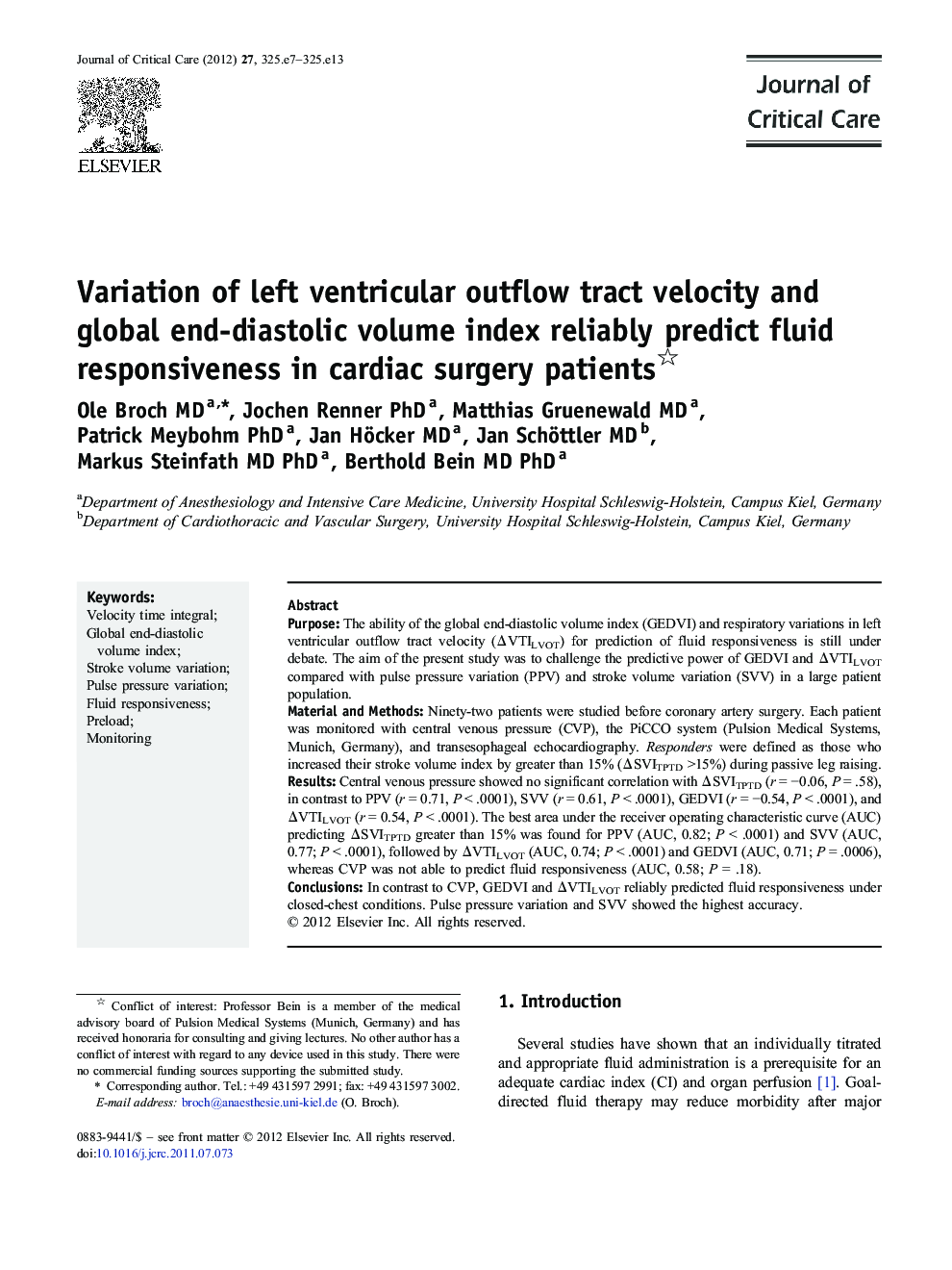| Article ID | Journal | Published Year | Pages | File Type |
|---|---|---|---|---|
| 5886411 | Journal of Critical Care | 2012 | 7 Pages |
PurposeThe ability of the global end-diastolic volume index (GEDVI) and respiratory variations in left ventricular outflow tract velocity (ÎVTILVOT) for prediction of fluid responsiveness is still under debate. The aim of the present study was to challenge the predictive power of GEDVI and ÎVTILVOT compared with pulse pressure variation (PPV) and stroke volume variation (SVV) in a large patient population.Material and MethodsNinety-two patients were studied before coronary artery surgery. Each patient was monitored with central venous pressure (CVP), the PiCCO system (Pulsion Medical Systems, Munich, Germany), and transesophageal echocardiography. Responders were defined as those who increased their stroke volume index by greater than 15% (ÎSVITPTD >15%) during passive leg raising.ResultsCentral venous pressure showed no significant correlation with ÎSVITPTD (r = â0.06, P = .58), in contrast to PPV (r = 0.71, P < .0001), SVV (r = 0.61, P < .0001), GEDVI (r = â0.54, P < .0001), and ÎVTILVOT (r = 0.54, P < .0001). The best area under the receiver operating characteristic curve (AUC) predicting ÎSVITPTD greater than 15% was found for PPV (AUC, 0.82; P < .0001) and SVV (AUC, 0.77; P < .0001), followed by ÎVTILVOT (AUC, 0.74; P < .0001) and GEDVI (AUC, 0.71; P = .0006), whereas CVP was not able to predict fluid responsiveness (AUC, 0.58; P = .18).ConclusionsIn contrast to CVP, GEDVI and ÎVTILVOT reliably predicted fluid responsiveness under closed-chest conditions. Pulse pressure variation and SVV showed the highest accuracy.
